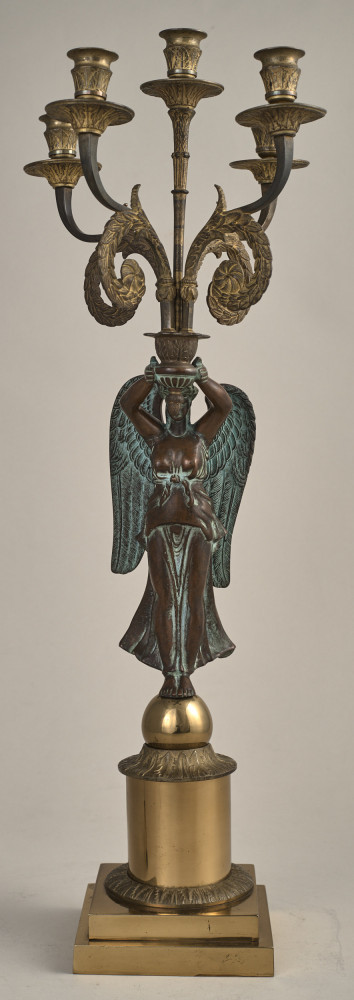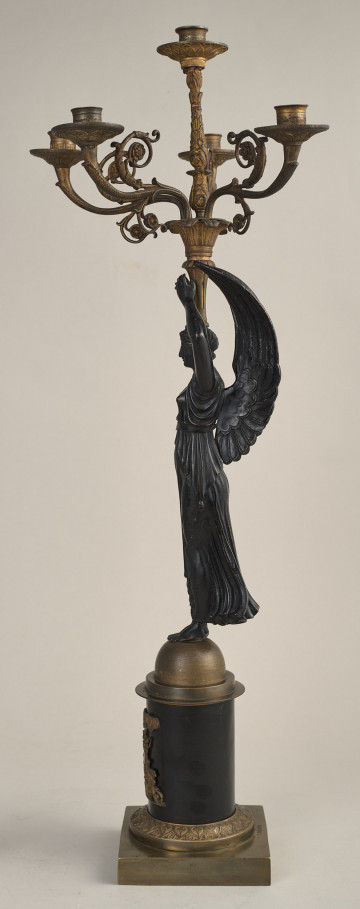
Candelabra
1st half of the 19th century
Castle Museum in Łańcut
Part of the collection: Lampy, żyrandole i kinkiety
Candlestand A candlestand is an upright candle holder, quite a high one, made of metal, frequently painted and gilded, known since antiquity. In the 17th century the most common ones were candlestands for two candles, in the 18th century – for three, and in the 19th century – for multiple candles. The Łańcut candlestand, in the empire style, can hold five candles, and is made of painted and partly gilded bronze. The candle, as a source of light, was in common use until the light bulb was invented, meaning, until the 19th century, and subsequently its use was guided by issues of aesthetics. Candles were known since the antiquity, with the wick made of flax covered with beeswax; the homes of those less well off used animal fat instead of beeswax (tallow candles). Contemporary beeswax candles are equally high, hence, the majority is made of paraffin or stearin. The candlestand is made up of a base – a plinth ending in a ball, on which winged Nike stands, holding a base with the six arms of the candle stands. The metal bobeches with fish scale decoration, the central arm is straight in the form of a chalice, as opposed to the five other arms, which are bent into shape, each decorated with superimposed stylised leaves and a volute with a rosette. On the plinth, there is a decoration of five medallions with female heads, wearing wreaths and blossoms. The medallions are separated by simple components (columns?), between which there are garlands of a writhing band. The candlestand stems from the first half of the 19th century, most likely from France; it is made of gilded bronze. At that time, bases became popular that were shaped as women (caryatids), holding the unit in raised arms.
Dimensions
height: 96 cm
Object type
Lamps, chandeliers and sconces
Technique
sculpture
Material
bronze
Creation time / dating
Owner
Castle Museum in Łańcut
Identification number
Location / status

1st half of the 19th century
Castle Museum in Łańcut

19th (?) century
Castle Museum in Łańcut

19th (?) century
Castle Museum in Łańcut
DISCOVER this TOPIC
Castle Museum in Łańcut
DISCOVER this PATH
Educational path